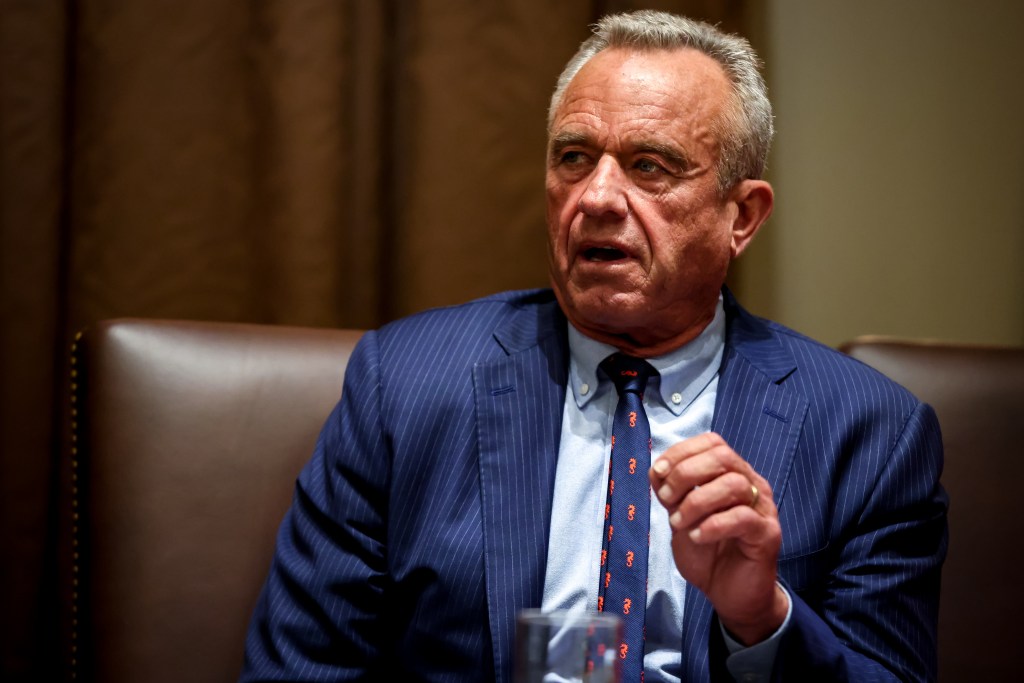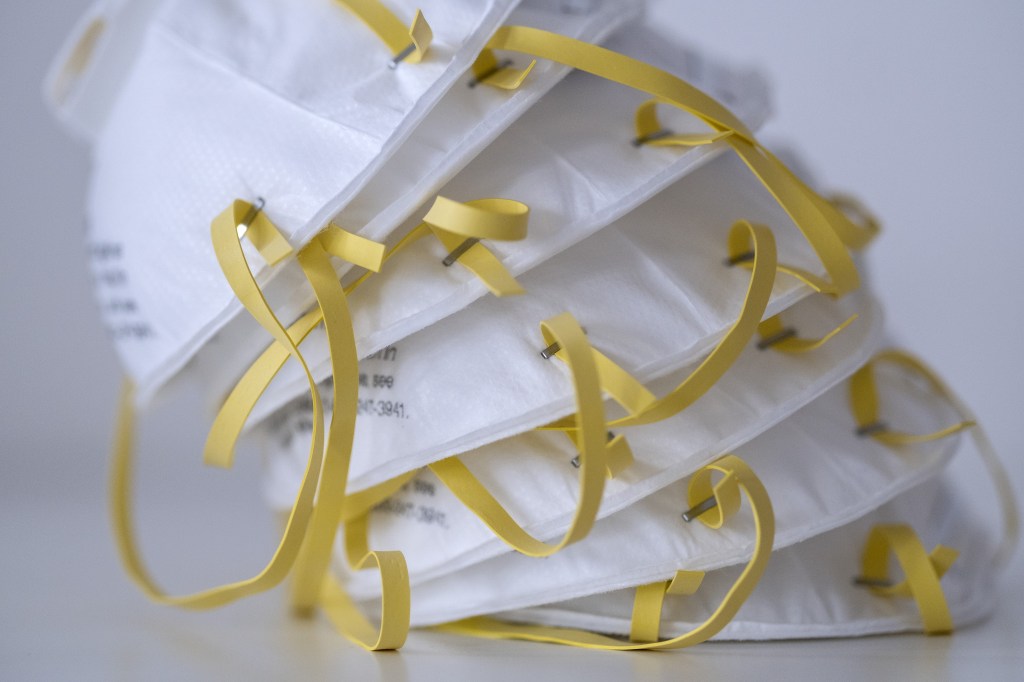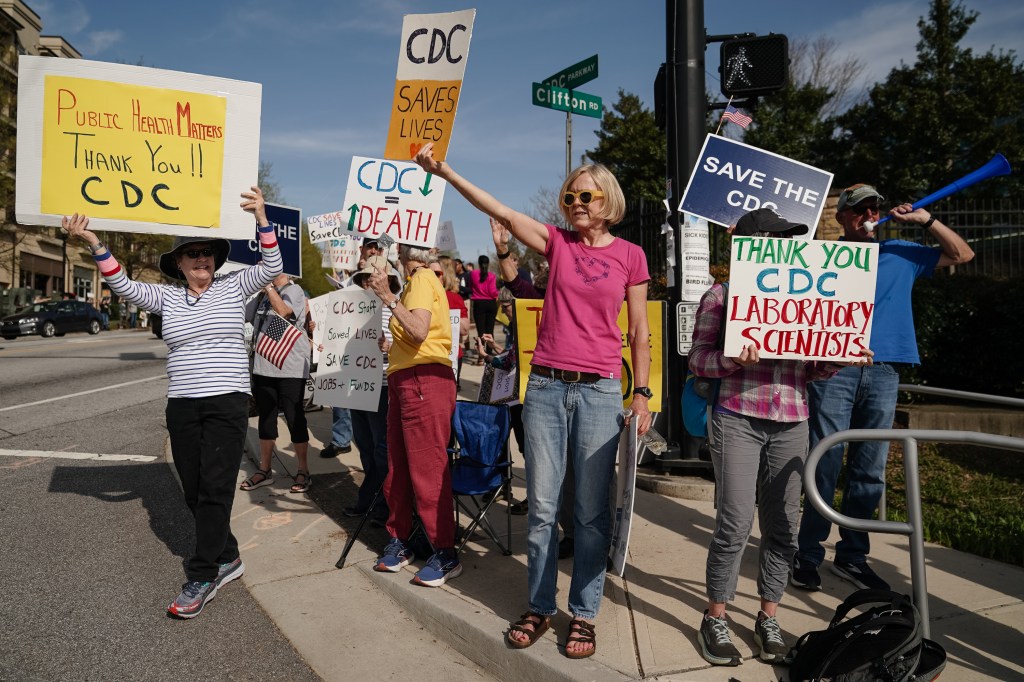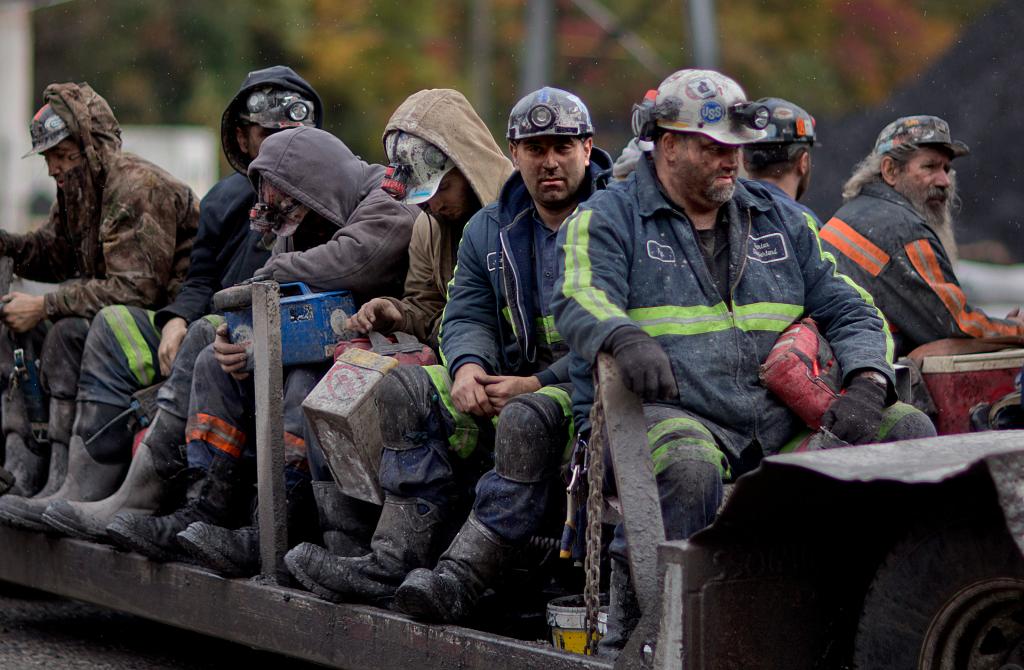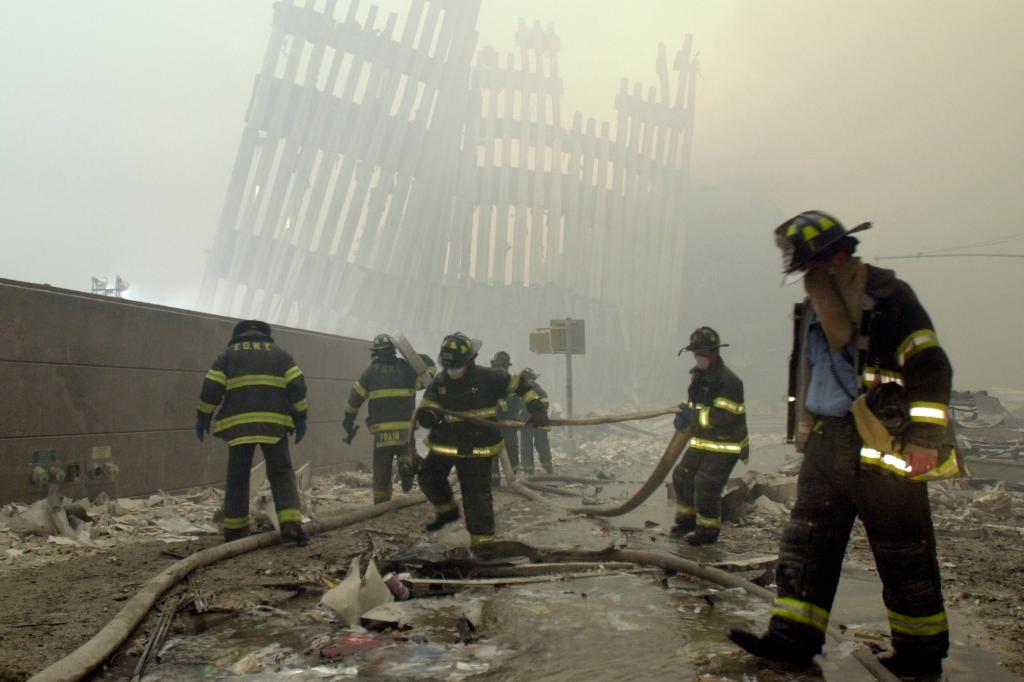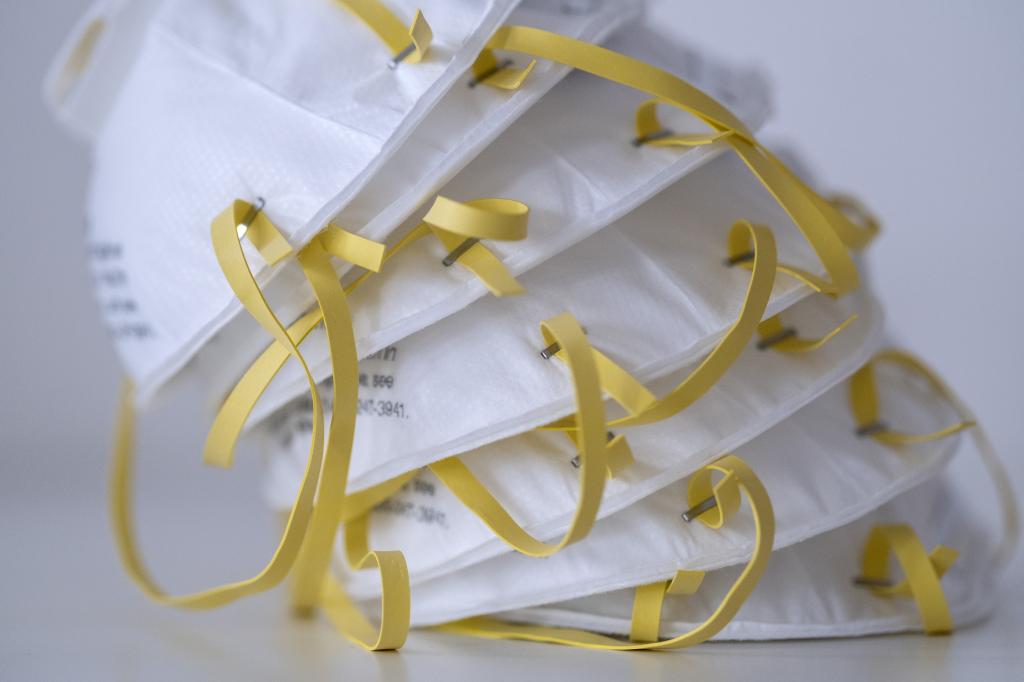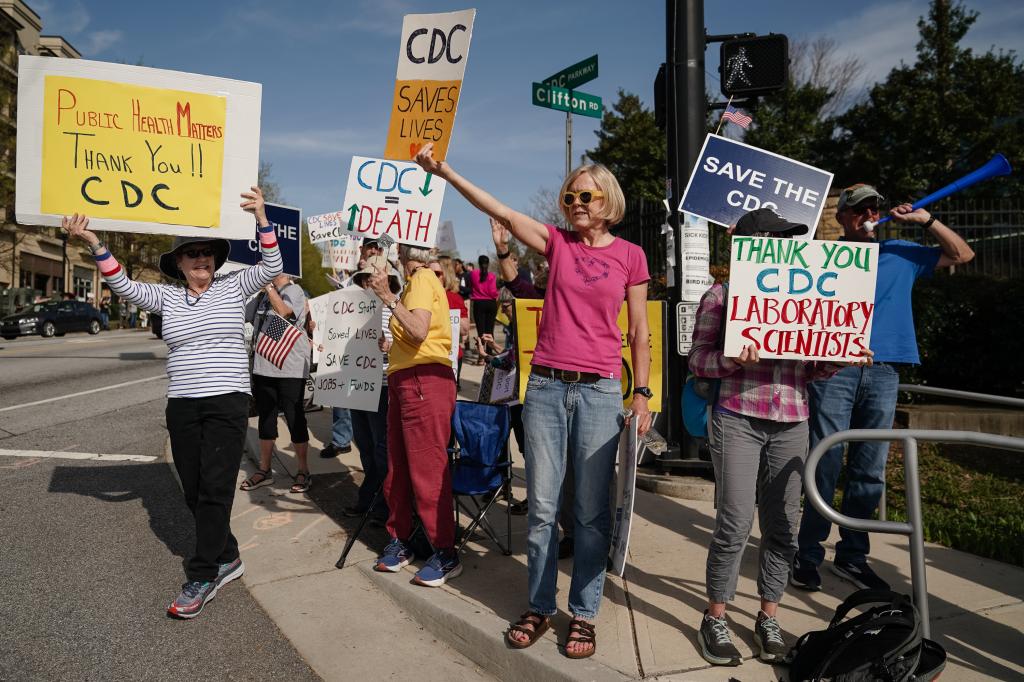Government layoffs threaten US firefighter cancer registry, mine research and mask lab
Government staffing cuts have gutted a small U.S. health agency that aims to protect workers �?drawing rebukes from firefighters, coal miners, medical equipment manufacturers, and a range of others.
The National Institute for Occupational Safety and Health, a Cincinnati-based agency that is part of the Centers for Disease Control and Prevention, is losing about 850 of its approximately 1,000 employees, according to estimates from a union and affected employees. Among those ousted were its director, Dr. John Howard, who had been in the job through three previous presidential administrations.
The layoffs are stalling �?and perhaps ending �?nbsp;, including a firefighter cancer registry and a lab that is key to certifying respirators for many industries.
The cuts are “a very pointed attack on workers in this country,�?said Micah Niemeier-Walsh, vice president of the union local representing NIOSH employees in Cincinnati.
Unions that represent miners, nurses, flight attendants and other professions have criticized the cuts, saying it will slow the identification and prevention of workplace dangers. Rallies in Cincinnati and other cities drew not only fired CDC employees but also members of unions representing teachers, postal workers, and bricklayers, Niemeier-Walsh said.
NIOSH doctors review and certify that 9/11 first responders who developed chronic illnesses could qualify for care under the federal government’s World Trade Center Health Program, noted Andrew Ansbro, president of a union that represents New York City firefighters.
“Dismantling NIOSH dishonors the memory of our fallen brothers and sisters and abandons those still battling 9/11-related illnesses,�?Ansbro said in a statement.
Agency investigates workplace hazards
NIOSH was created under a 1970 law signed by President Richard Nixon. It started operations the following year and grew to have offices and labs in eight cities, including Cincinnati; Pittsburgh; Spokane, Washington; and Morgantown, West Virginia.
In the more than 50 years since, it has done pioneering research on indoor air quality in office buildings, workplace violence, and occupational exposures to bloodborne infections.
NIOSH investigators identified a new lung disease in workers at factories that made and helped assess what went wrong during the Deepwater Horizon oil rig disaster. It was recently involved in the CDC’s response to measles, advising on measures to stop the spread within hospitals.
Some of its best-known work is related to mining. It trains and certifies doctors in how to test for black lung disease, and the agency conducts its own mobile screenings of miners. For years, NIOSH owned an experimental mine in Pennsylvania and two years ago it was developing a replacement research facility near Mace, West Virginia, that would feature tunnels and other mine structures.
Its research and recommendations have served as the foundation for Department of Labor rules for worker protection, including one issued last year for coal miners that cuts by half the permissible exposures to poisonous silica dust.
Studies have concluded that NIOSH research helps the nation save millions of dollars each year in avoided workers�?compensation and other costs.
“Any stoppage to this type of research and recommendations can impact all segments of the workforce,�?said Tessa Bonney, who teaches about occupational health at the University of Illinois at Chicago.
Impact of deep staff cuts are unclear
NIOSH was swept up in the massive upheaval at the U.S. Department of Health and Human Services that includes about 10,000 layoffs, an anticipated reorganization and proposed budget cuts.
Nonunionized NIOSH workers �?mainly supervisors �?were told to clean out their desks immediately. Bargaining unit employees got layoff notices and were told their terminations would happen later this year.
“Right now we are trying to figure out chain of command,�?Niemeier-Walsh said.
An HHS spokesman, Andrew Nixon, said what’s left of NIOSH will be moved into a newly created agency to be called the Administration for a Healthy America.
HHS Secretary Robert F. Kennedy Jr. has said that 20% of the people laid off from federal health agencies might be reinstated as the agency tries to correct mistakes, but the department has not detailed which parts of NIOSH were reduced or eliminated and which will remain open.
What’s known about the cuts made so far was pieced together by employees affected by the layoffs and the union that represents them. They say that almost every NIOSH program faced steep cuts or outright elimination.
A firefighter cancer registry website went down Tuesday “because there were no IT people left to staff the system,�?Niemeier-Walsh said.
And at least some of the hundreds of mice and rats at a NIOSH lab in Morgantown likely will have to be destroyed because the layoffs put an abrupt, mid-experiment end to inhalation research there, said Cathy Tinney-Zara, a public health analyst who is president of the union local representing employees there.
“Million of dollars of research, decades of research, is going down the drain,�?Tinney-Zara said.
Industry concerned about certification lab
Some of the outcry from unions and industry has centered on the National Personal Protective Technology Laboratory, an NIOSH office that tests and certifies fitted masks that protect workers from inhaling airborne dangers. (The N95 masks that became popular during the COVID-19 outbreak are named for a .)
Closing the lab gives a competitive advantage to companies in China and other countries that send products to the U.S. without meeting the stringent quality standards that come with certification, said Eric Axel, executive director of the American Medical Manufacturers Association.
“This decision effectively rewards foreign manufacturers who have not made the same investments in quality and safety while punishing American companies that have built their reputations on producing reliable, high-quality protective equipment,�?Axel said in a statement.
The cuts are “really devastating,�?said Rebecca Shelton, director of policy for the Appalachian Citizens�?Law Center, a Kentucky-based organization that provides legal help to ill coal miners.
“Here in central Appalachia, everybody knows somebody with black lung disease,�?she said.
It appears NIOSH programs for coal miners are being eliminated, raising questions about who will monitor for new cases and spot trends, Shelton said.
NIOSH staff routinely visited mines and rural communities to offer free screenings and speak at public meetings about black lung disease and other workplace health issues.
“These are not out-of-touch federal workers. They are very well connected�?with their communities, she said.
Many NIOSH workers come from families that have worked in occupational health for generations. Niemeier-Walsh’s grandfather was an agency toxicologist for 30 years.
“It was normal dinnertime conversation in our family to talk about how you can use the power of science to protect workers,�?she said.










